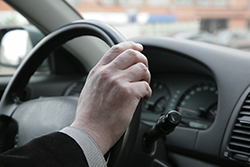 Do you have employees driving their personal vehicles on behalf of your organization? Perhaps for making sales calls, visiting clients, running to the post office, or picking up equipment or supplies? If so, what risk management strategies have you adopted to ensure your company is properly protected and your employees are properly insured for business use?
Do you have employees driving their personal vehicles on behalf of your organization? Perhaps for making sales calls, visiting clients, running to the post office, or picking up equipment or supplies? If so, what risk management strategies have you adopted to ensure your company is properly protected and your employees are properly insured for business use?
Let’s consider an example. Jim is driving to meet a client at their location. While on the road he gets into an accident and is determined to be at fault. Jim then reports his claim to his personal insurance company, later to find out he has a business use exclusion in the policy. What does this mean for Jim? He now has a damaged vehicle with no insurance to cover the cost of repair. Furthermore, had there been bodily injury or property damage to a third party, Jim’s insurance company may have also denied this claim, ultimately leaving his employer on the hook for the third party liability associated with the accident.
If Jim is your employee, how do you respond? Chances are your corporate auto policy will not cover the physical damage to Jim’s vehicle as it is not owned, leased, or hired by the organization. So when Jim comes to you asking for money to help repair his vehicle, how will you handle this?
Most organizations contend the mileage reimbursement they provide is intended to repay the employee for their expenses related to operating the car including gas, maintenance, and the cost of insurance. Others may agree to help Jim repair his vehicle. For those who agree to help Jim out of pocket, what message does this send to the rest of the workforce? Knowing that business use may slightly bump up the annual cost of personal auto insurance, would paying Jim encourage others to drive on behalf of the organization without proper coverage for business use? Regardless of the route you take, this situation is preventable.
To help keep a situation like this from happening, your company should take the time to educate your workforce on personal auto insurance expectations and allocate resources to ensure both the organization and your employees are properly protected.
At the same time, your employees should have a strong understanding of the pitfalls of “cheap” auto insurance. This process could become part of your orientation, and revisited on a recurrent basis. Training for personal autos may include:
Business Use
An employee using their vehicle for business use may not have proper protection under their personal auto liability policy. Your employees should make their insurance company aware that they will be utilizing their personal vehicle for business use. They should be sure the insurance company rates their vehicle as such and has removed any exclusionary language regarding business use to avoid coverage gaps for their vehicle damage and/or personal liability.
Minimum Coverage Limits
Evidence supports that state minimum auto liability limits are not adequate protection for an individual. Additionally, when an employee uses their personal vehicle for company business, a liability exposure is created for the company should the employee be involved in an accident. Because of these exposures, many employers will require employees to maintain higher auto liability insurance limits.
Common Coverage Gaps
Employees in entry-level or lower pay type positions may seek coverage though state minimum insurance programs. But there are often numerous coverage gaps with these programs that employees should be aware of:
- Covered Drivers – Encourage employees to review their personal auto policy for limiting or exclusionary language regarding drivers. Possible pitfalls include, but are not limited to, unlicensed drivers, drivers whose license is suspended, and unnamed drivers that have regular use of your vehicle.
- Medical Payments – This coverage provides a limited amount of coverage for any medical charges incurred as a result of a covered automobile accident, outside of workers’ compensation. It is relatively inexpensive and can provide reimbursement for co-pays and deductibles under the policy holder’s health insurance or act as the primary payor in the event there is no health insurance.
- Uninsured/Underinsured Motorist Coverage – This coverage provides protection in the event the policyholder is involved in a not-at-fault accident, and the at-fault party does not maintain adequate insurance. For more information on understanding uninsured and underinsured coverages, check out our blog on the topic.
Basic education and proper risk management can go a long way in addressing non-owned auto exposures. As we all value our people and our organizations, it’s important to take the necessary steps to protect them both. These practices are not only good for you; they are good for you employees as well.



